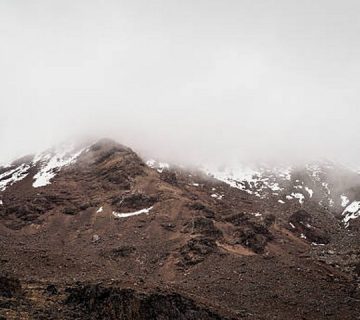Safe Descent From Kilimanjaro For A Smooth Recovery
Standing majestically as Africa’s highest peak, Mount Kilimanjaro is not just a mountain; it’s a beacon of achievement that calls to adventurers from every corner of the globe. Conquering its heights offers an unparalleled sense of accomplishment, yet the ascent is only half the journey. The descent, often overlooked, plays a critical role in the entire experience, dictating the smoothness of your recovery post-climb. At Kilimanjaro Centre for Trekking and Ecotourism (KCTE), we understand that ensuring a safe and manageable descent is paramount to the quality of your overall adventure. Let’s explore why the descent is as significant as the climb and how you can descend safely for a smooth recovery.
Understanding the Importance of a Careful Descent
The Physical Impact of Descending
Descending Kilimanjaro is not merely a walk downhill; it is an integral part of your trek that demands attention and care. The descent can be tough on your body, particularly on your knees and ankles, due to the constant impact and the need for balance on the uneven terrain. Proper technique and preparation are essential to minimize potential injuries and physical strain.
Psychological Aspects
Mentally, the descent is a time of reflection and joy after reaching the summit. However, it can also be challenging as fatigue sets in. Maintaining a positive mindset and staying mentally engaged are crucial to safely navigate back down the mountain.
Planning Your Descent
Choosing the Right Route
Kilimanjaro offers several routes for both ascent and descent, each with its unique characteristics. At KCTE, we recommend routes that best match your physical fitness, experience, and recovery needs. The Marangu Route, for instance, is often preferred for descent as it is considered the most gradual and has hut accommodations, which can ease the strain of the journey.
Timing Your Descent
It’s vital to time your descent to avoid exhaustion. Starting early in the day when you are fresher and the weather is clearer can make a significant difference. This also provides ample time to reach your next camp or the park gate without rushing, reducing the risk of accidents.
Essential Tips for a Safe Descent
Pace Yourself
Maintaining a slow and steady pace is crucial. ‘Pole pole’ (slowly, slowly in Swahili) is the mantra on Kilimanjaro for good reason. Rushing increases your risk of a fall and can lead to more severe muscle soreness or joint pain later on.
Use Proper Gear
High-quality, well-fitting hiking boots with good ankle support and grip are essential to maintain stability and comfort. Trekking poles can also be invaluable, as they reduce the load on your legs and provide additional balance.
Stay Hydrated and Nourished
Hydration is just as important during your descent. Drink water regularly and eat balanced meals to replenish energy stores and aid muscle recovery. This is crucial to prevent dehydration and maintain your strength throughout the descent.
Listen to Your Body
Be attentive to what your body is telling you. If you feel undue pain or fatigue, it’s important to communicate with your guide. At KCTE, our guides are trained to monitor climbers for any signs of distress and to take appropriate actions, including adjusting the pace or even taking extended breaks.
Recovery After the Descent
Post-Descent Care
Once at the base, it’s important to continue caring for your body. Stretching, eating well, staying hydrated, and getting plenty of rest are key. Our team at KCTE offers post-climb support to help you recover smoothly.
Celebrating Your Achievement
Completing a descent is itself an achievement worth celebrating. Take the time to acknowledge your effort and the beautiful experiences you’ve gathered. This not only provides psychological satisfaction but also helps in emotional recovery, rounding off your journey on a high note.
Why Book Your Climb and Descent with Kilimanjaro Centre For Trekking and Ecotourism (KCTE)?
At KCTE, we are dedicated to providing a holistic climbing experience that encompasses not just the ascent but a safe, enjoyable, and recoverable descent. Our expert guides, careful route selection, and emphasis on safety ensure that you enjoy every part of your journey, from the peak to the plains.
FAQs
What is the average time required for descending Mount Kilimanjaro?
The descent typically takes 1-2 days, depending on the route and your pace.
How can I best prepare for the descent physically?
Regular cardiovascular and strength training, focusing on legs and core, can prepare your body for the physical demands of descent.
Are there any specific techniques for descending steep sections?
Yes, zigzagging or switchbacking can help manage steep descents, reducing the strain on your knees.
How do guides assist during the descent?
Our KCTE guides are constantly assessing the terrain and your physical condition, providing support, pace management, and motivation throughout the descent.
In conclusion, a safe descent from Kilimanjaro is crucial for a smooth recovery and overall enjoyable experience. By choosing the right partner in Kilimanjaro Centre for Trekking and Ecotourism, you are setting the stage for a successful, memorable, and fulfilling adventure. Ready to embark on your Kilimanjaro journey with a trusted partner by your side? Contact us today to start planning your ascent—and descent—of this majestic mountain!




